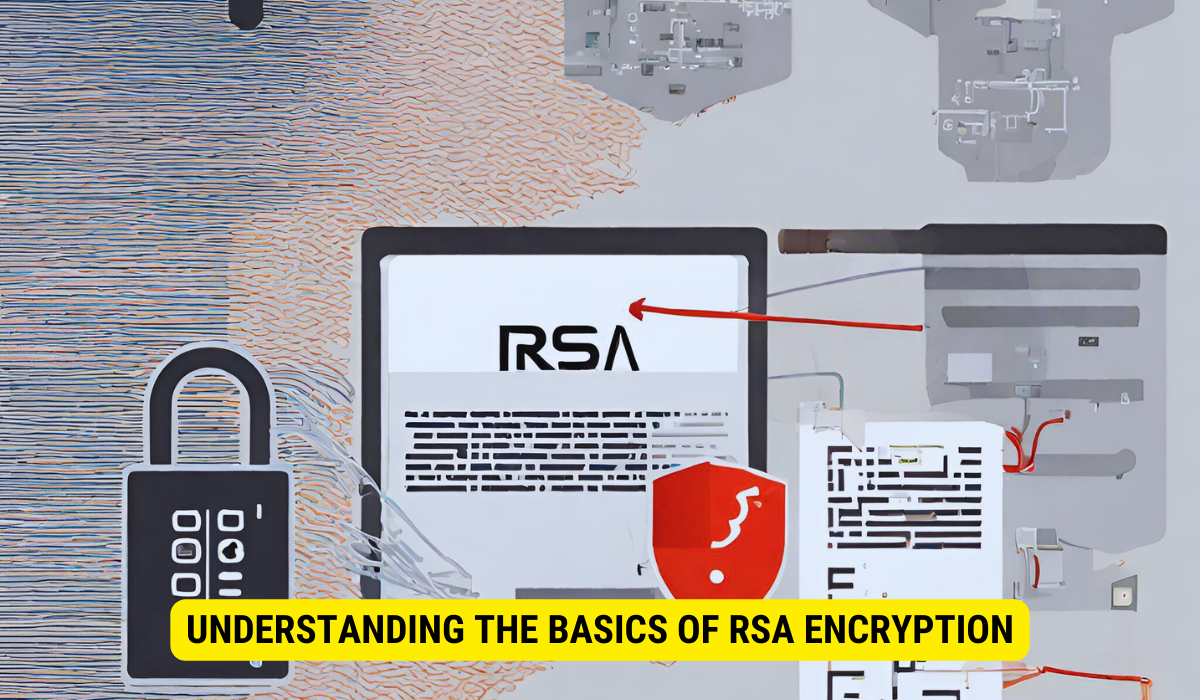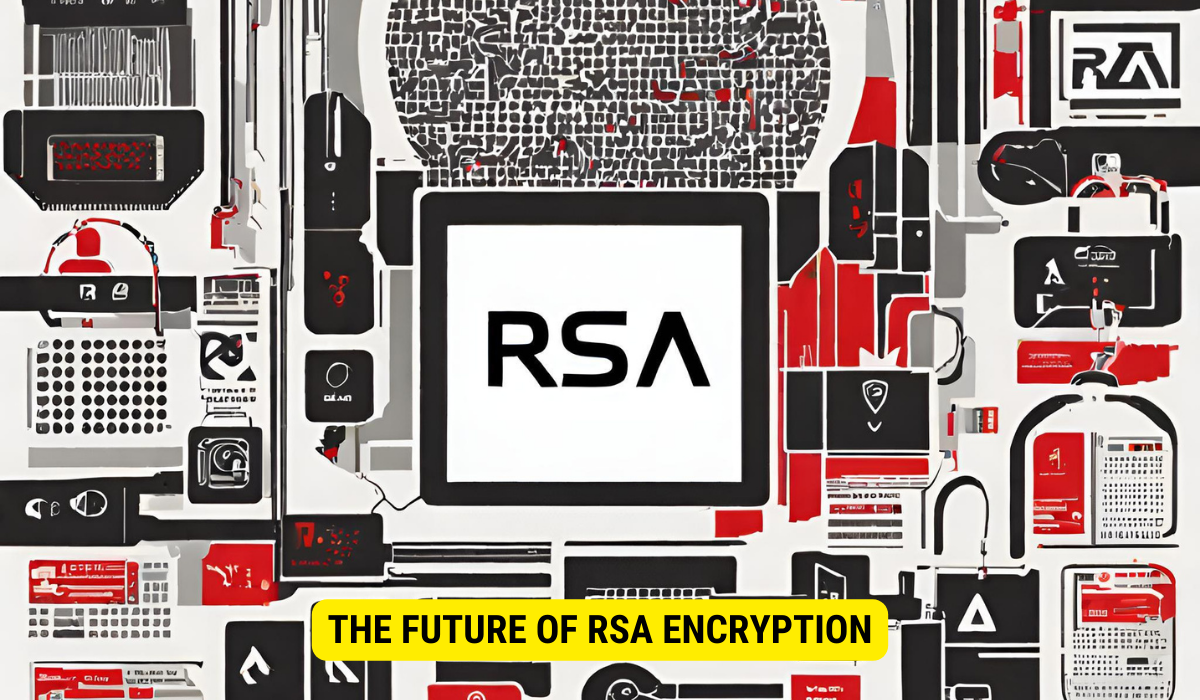The smallest amount of data that can be encrypted with RSA is influenced by factors like the padding scheme used and the key size. For instance, using the PKCS#1 v1.5 padding requires a minimum of 11 bytes of plaintext, whereas OAEP padding typically demands at least 41 bytes.
In the world of data encryption, RSA is a widely used and highly secure algorithm. But have you ever wondered what the smallest amount of data that can be encrypted with RSA is? I will explore the basics of RSA encryption, the process involved, the factors determining the data size, the limitations and challenges, and finally, the future of RSA encryption.
Understanding the Basics of RSA Encryption

The History of RSA Encryption
Before diving into the specifics, let’s take a quick look at the history of RSA encryption. RSA, named after its creators Ron Rivest, Adi Shamir, and Leonard Adleman, was first introduced in 1977. It quickly gained popularity thanks to its robust security and practicality.
During the late 1970s, the need for secure communication became increasingly important. Traditional encryption methods, such as symmetric encryption, had limitations in terms of key distribution and security. This led Rivest, Shamir, and Adleman to develop RSA encryption, which revolutionized the field of cryptography.
Since its introduction, RSA encryption has become widely adopted and is now considered one of the most secure encryption algorithms available. Its impact on the field of computer security cannot be overstated.
The Principles of RSA Encryption
At its core, RSA encryption relies on two primary principles: the use of public and private keys. The public key is used for encryption, while the remote key is used for decryption. This asymmetric encryption allows secure communication between parties.
When a user wants to direct an encrypted message to an added user, they use the recipient’s public key to encrypt the message. Once encrypted, only the recipient’s private key can decrypt the message, ensuring that only the intended recipient can read it.
The security of RSA encryption lies in the fact that it is computationally infeasible to derive the private key from the public key. This means that even if an attacker intercepts the encrypted message and has access to the public key, they would not be able to decrypt it without the corresponding private key.
Another important aspect of RSA encryption is the use of prime numbers. The security of the algorithm relies on the difficulty of factoring large prime numbers. The larger the prime numbers used, the more secure the encryption becomes.
Overall, RSA encryption provides a robust and secure method for protecting sensitive information during communication. Its widespread adoption and continued use in various applications demonstrate its effectiveness in ensuring data confidentiality.
The Process of RSA Encryption
RSA encryption is a widely used cryptographic algorithm that ensures secure communication over an insecure network. It is based on the mathematical properties of large prime numbers and modular arithmetic. The process of RSA encryption involves several key steps, including key generation, encryption, and decryption.
Key Generation in RSA

Key generation is a vital step in RSA encryption. It involves the creation of both the public and private keys. The public key is made widely available, while the owner securely keeps the private key.
During key generation, two large prime numbers, p, and q, are randomly selected. These prime numbers are used to compute the modulus n, which is the product of p and q. The modulus along with another number called the public exponent, e, forms the public key.
The private key is derived from the prime numbers p and q, as well as the public exponent e. It is calculated using a mathematical operation called modular multiplicative inverse. The private key comprises modulus n and another number called the private exponent, d.
Once the keys are generated, they are stored securely. The public key can be easily distributed to anybody who wants to send encrypted messages to the owner, while the private key must be kept secret.
Encryption and Decryption in RSA
Once the keys are generated, the encryption and decryption process can take place. The sender uses the recipient’s public key to encrypt the data, ensuring only the recipient can decrypt it using their private key.
When encrypting a message, the sender breaks the message into smaller blocks and applies a mathematical operation to each block using the recipient’s public key. The result is a ciphertext, which is a scrambled version of the original message. The ciphertext is then directed to the recipient.
Upon receiving the ciphertext, the recipient uses their private key to decrypt it. The recipient applies a mathematical operation to the ciphertext using their private key, resulting in the original message being revealed.
One of the fundamental properties of RSA encryption is that the encryption operation is computationally easy, while the decryption operation is computationally hard. This property ensures the security of the encrypted data, as it would take an impractical amount of time and computational power to decrypt the data without the private key.
Overall, the process of RSA encryption provides a secure and reliable method for transmitting complex information over insecure networks. It relies on the generation of strong keys and the use of mathematical operations to encrypt and decrypt data. By understanding the intricacies of RSA encryption, individuals and organizations can protect their data and ensure the confidentiality of their communications.
The Smallest Amount of Data in RSA Encryption
RSA encryption is a widely used cryptographic algorithm that relies on the mathematical properties of prime numbers. It is commonly used to secure sensitive data during transmission or storage. The smallest amount of data that can be encrypted with RSA depends on several factors, which we will explore in this article.
Factors Determining the Data Size in RSA
One of the key factors that determine the data size in RSA encryption is the padding scheme used. Padding is essential to ensure the security and integrity of the encrypted data. It adds random bits to the plaintext before encryption, making it harder for an attacker to deduce any patterns or extract meaningful information. The padding length, along with other parameters, influences the minimum data size that can be encrypted.
There are different padding schemes available, such as PKCS#1 v1.5 and OAEP (Optimal Asymmetric Encryption Padding). Each scheme has its advantages and considerations, and the choice of padding scheme can impact the minimum data size that can be encrypted. For example, PKCS#1 v1.5 padding requires a minimum of 11 bytes of plaintext, while OAEP padding has a higher overhead and typically requires a minimum of 41 bytes of plaintext.
The Role of Key Size in Data Encryption
Another important factor that determines the data size in RSA encryption is the key size. The RSA algorithm relies on the use of a public key for encoding and a private key for decryption. The larger the key size, the safer the encryption, as it becomes computationally harder for an attacker to factorize the modulus and derive the private key.
However, increasing the key size also increases the size of the ciphertext. This means that a larger key size directly impacts the minimum amount of data that can be encrypted. For example, with a 1024-bit key, the minimum data size that can be encrypted is typically around 86 bytes, while with a 2048-bit key, the minimum data size increases to around 214 bytes.
It is worth noting that the choice of key size should be balanced between security and performance. While larger key sizes offer stronger encryption, they also require more computational resources for encryption and decryption operations. Therefore, it is important to consider the specific requirements of the application and the available computational resources when determining the key size and, consequently, the minimum data size that can be encrypted.
Limitations and Challenges of RSA Encryption
RSA encryption, a widely used encryption algorithm, is known for its high level of security. However, it is not without its limitations and challenges. Understanding these boundaries is crucial for ensuring the effectiveness and reliability of RSA encryption.
Security Concerns in RSA Encryption
While RSA encryption is highly secure, it is important to acknowledge its vulnerabilities. As computing power continues to advance at a rapid pace, the security of smaller key sizes diminishes. This means that what was once considered a secure key size may no longer provide the same level of protection against brute force attacks.
In addition to the threat posed by increasing computing power, RSA encryption can also be vulnerable to side-channel attacks. These attacks exploit information leaked during the encryption process, such as timing or power consumption, to gain unauthorized access to encrypted data. Implementing countermeasures to mitigate the risk of side-channel attacks is essential in maintaining the integrity of RSA encryption.
Furthermore, the security of RSA encryption relies on the difficulty of factoring large prime numbers. However, mathematical breakthroughs or advances in factoring algorithms could potentially undermine the security of RSA encryption. Continuous research and development in the field of cryptography are necessary to address these potential vulnerabilities and ensure the long-term security of RSA encryption.
Efficiency and Speed in RSA Encryption
Another challenge with RSA encryption lies in its relative inefficiency and slower processing speed compared to symmetric encryption algorithms. RSA encryption involves complex mathematical operations, such as modular exponentiation, which can be computationally intensive.
This inefficiency makes RSA encryption less suitable for encrypting large amounts of data or real-time communication. For applications that require high-speed encoding decryption, symmetric encryption algorithms, such as AES (Advanced Encryption Standard), are often preferred.
However, it is worth noting that RSA encryption is commonly used in combination with symmetric encryption algorithms. This hybrid approach, known as hybrid encryption, combines the strengths of both RSA and symmetric encryption to attain a balance between security and efficiency.
In conclusion, while RSA encryption offers a high level of security, it is important to be aware of its limitations and challenges. Understanding these limitations and implementing appropriate countermeasures is vital for ensuring the effectiveness and consistency of RSA encryption in an ever-evolving digital landscape.
The Future of RSA Encryption

Quantum Computing and RSA Encryption
The advent of quantum computing poses a significant threat to RSA encryption. Quantum computers have the potential to break RSA encryption by factoring large numbers efficiently. As a result, researchers are actively exploring post-quantum encryption algorithms to ensure future data security.
RSA Alternatives and Advancements
As the future of RSA encryption faces challenges, researchers are also developing alternative encryption methods. These include lattice-based, code-based, and multivariate-based schemes. These alternatives aim to provide secure encryption algorithms resistant to quantum computational attacks.
Key Takeaways
- RSA Fundamentals: RSA encryption operates on the principle of using public and private keys, where the public key encrypts data, and the corresponding private key decrypts it.
- Data Size Factors: The smallest data size RSA can encrypt is influenced by the chosen padding scheme and the key size. Different padding methods, like PKCS#1 v1.5 and OAEP, have varied data size requirements.
- Key Size Implications: Larger RSA key sizes enhance encryption security but also increase the ciphertext size, impacting the minimum amount of data encrypted.
- Quantum Threat: Quantum computing’s potential to efficiently factor large numbers poses a substantial risk to RSA encryption’s security.
- Future Alternatives: Due to potential quantum threats, the cryptographic community is exploring post-quantum encryption algorithms and alternative encryption methods resistant to quantum attacks.
FAQs
What is RSA encryption?
RSA encryption is an asymmetric encryption algorithm developed by Ron Rivest, Adi Shamir, and Leonard Adleman in 1977, which uses a pair of public and private keys for secure data communication.
Why is padding used in RSA encryption?
The padding adds randomness to the plaintext before encryption, making it more challenging for attackers to discern patterns or derive meaningful insights.
How does the key size affect RSA encryption?
A larger key size enhances the security of the encryption, but it also increases the size of the ciphertext. For example, with a 1024-bit key, the typical minimum data size encrypted is around 86 bytes, while with a 2048-bit key, it’s approximately 214 bytes.
What are the main challenges facing RSA encryption?
RSA faces vulnerabilities from increasing computing power, the potential for side-channel attacks, and the onset of quantum computing, which can efficiently factor in large numbers.
How is the future of RSA encryption shaping up with the advent of quantum computing?
Quantum computers threaten RSA encryption by possibly breaking it efficiently. Researchers are now looking into post-quantum encryption algorithms to ensure continued data security.
Conclusion
In conclusion, the smallest amount of data that can be encrypted with RSA encryption depends on various factors, such as the padding scheme and key size. While RSA encryption is highly secure, it faces challenges related to evolving security concerns and computational efficiency. With the emergence of quantum computing, the future of RSA encryption will rely on advancements in post-quantum cryptography and alternative encryption algorithms.
